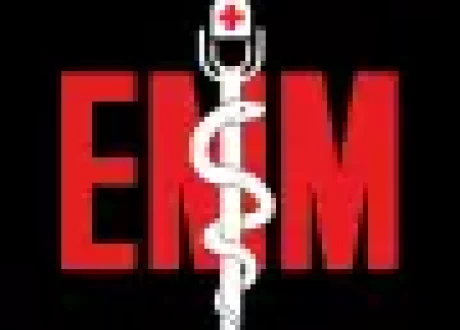February 19, 2024
Written by Rebecca DiFabio and Ketan Patel
![]()
This single-center prospective study found that in 2,275 ECGs with a computerized interpretation of “normal” and “otherwise normal,” there was a negative predictive value (NPV) of 100% for STEMI, with no final diagnoses of ACS or STEMI, and none required cardiac catheterization that visit.
If the Computer Says Nay, May You Safely Delay?
The AHA recommendation for patients experiencing chest pain or angina-equivalents is to undergo ECG with interpretation by a clinician within 10 minutes of arrival. The necessity of timely interpretation contributes to the overall strain on and distraction of emergency physicians for a task that could perhaps be deferred to time of evaluation.
In this single-center study, triage ECGs obtained that had a computer interpretation of “normal” or “otherwise normal” were reviewed by cardiologists for prospective assent or dissent. Of the 2,275 ECGs included, 1,170 were “normal” and 1,105 were “otherwise normal.” In those “normal,” there was a disagreement rate of 3.3%, while “otherwise normal,” had disagreement rates of 3.1%.
None of these patients were diagnosed with STEMI or ACS, underwent cardiac catheterization at that visit, and only 1.4% were admitted to the hospital. This is promising data given the large sample size and absence of ACS or STEMI misses. Limitations such as the single-center design, only one type of ECG machine utilized, and the unknown 30-day MACE incidence are notable. All that said, this data is promising and contributes to the growing evidence that benign ECG interpretations have a highly accurate NPV for ACS/STEMI.
How will this change my practice?
As we’ve all come across, the computerized interpretations of ECGs are extremely variable in accuracy. As of now, I don’t foresee large changes in triage practices, AHA guidelines, or my practice, especially as this didn’t screen for other important pathology identified on ECG such as electrolyte-related changes that may not be picked up by the computer. As technology improves and becomes consistent across all practice settings, perhaps computer reads can cognitively offload this task allowing physicians to focus on more critical aspects of patient care.
Peer Reviewed by Dr. Ketan Patel
Editor’s note: We covered a similar paper in 2022 and a response from the Dr. Smith and colleagues. Computers often miss STEMI equivalents (aka occlusion myocardial infarction, OMI), like hyperacute T waves, subtle inferior STEMI, posterior STEMI, deWinter T waves, and the Aslanger pattern. I just previewed Amal Mattu’s new JournalFeed Top Picks video on this very subject, and you are going to love it when it drops in the next week or two! ~Clay Smith
Source
Validity of Computer-interpreted “Normal” and “Otherwise Normal” ECG in Emergency Department Triage Patients. West J Emerg Med. 2024;25(1):3-8. doi:10.5811/westjem.58464









